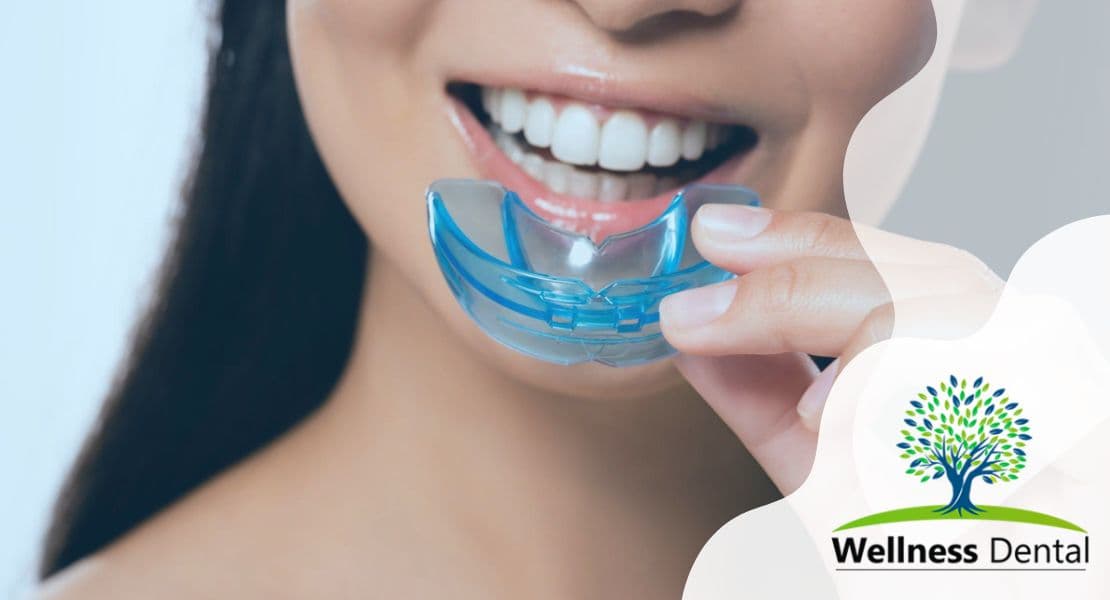Front teeth crowns, also known as dental crowns or tooth crowns, are tooth-shaped caps that are placed over a front tooth to protect and restore its structure and function. The purpose of front teeth crowns is to strengthen damaged or weakened teeth, enhance their appearance, and improve overall oral health.
Front teeth crowns can be made from various materials, each offering their own benefits. Porcelain crowns are popular for their natural appearance, closely resembling the color and translucency of natural teeth. Ceramic crowns, including e-max crowns, are also highly aesthetic and durable. Another option is zirconia crowns, which are exceptionally strong and resistant to chipping or breaking.
The different types of front tooth crowns available include porcelain-fused-to-metal crowns, all-ceramic or porcelain crowns, and metal crowns. Porcelain-fused-to-metal crowns combine the strength of a metal base with the natural appearance of porcelain. All ceramic or porcelain crowns provide excellent aesthetics and are an effective option for patients with metal allergies. Metal crowns, such as gold crowns, are known for their durability.
Front teeth crowns offer numerous benefits, including restoring tooth structure, improving functionality, and enhancing the appearance of misshapen or damaged teeth. They are an excellent option for teeth that have undergone root canal therapy, have extensive decay, or need cosmetic enhancement.
Front teeth crowns are dental caps that protect and restore front teeth. They are made from various materials, each with its own advantages. With different types of crowns available, patients can choose the best option for their specific needs, ensuring durability, aesthetics, and overall oral health.
What is the purpose of front tooth crowns?

Front tooth crowns are versatile dental restorations that serve a variety of purposes. Firstly, they are commonly used to restore damaged or decayed front teeth. A front tooth crown can effectively cover and protect a tooth that has been weakened by extensive decay or trauma. By encasing the entire tooth, the crown restores the tooth’s structure and provides strength and stability.
Additionally, front tooth crowns are an excellent option for improving the appearance of discolored or misshapen teeth. Whether the tooth is naturally dark or has become stained over time, a crown can create a uniform and aesthetically pleasing color. Crowns can also reshape and resize teeth that are irregular or mismatched in size, giving the patient a more harmonious smile.
Front tooth crowns are also commonly used to strengthen weak front teeth. Teeth that are inherently weak or have been weakened by large fillings or fractures can benefit from the added support of a crown. A crown covers the entire surface of the tooth, providing protection from further damage and preventing potential fractures.
Lastly, front tooth crowns are an effective solution to restore teeth that have undergone root canal therapy. After a root canal, the tooth may become weak and more prone to fractures. A crown can provide the necessary reinforcement, ensuring the longevity and functionality of the treated tooth.
In addition to these functional uses, front tooth crowns can also be used for cosmetic purposes. They can enhance the appearance of teeth with large fillings, providing a more natural and seamless look. Furthermore, crowns can be used to correct the alignment and shape of crooked teeth, resulting in a more symmetrical and attractive smile.
Overall, front tooth crowns offer a versatile and effective solution for damaged teeth, decayed teeth, and weak front teeth. They not only restore tooth structure and functionality but also improve the aesthetic appearance of the teeth, making them an excellent choice for both functional and cosmetic purposes.
Unveiling the Distinctions: Front Teeth Crowns vs Veneers
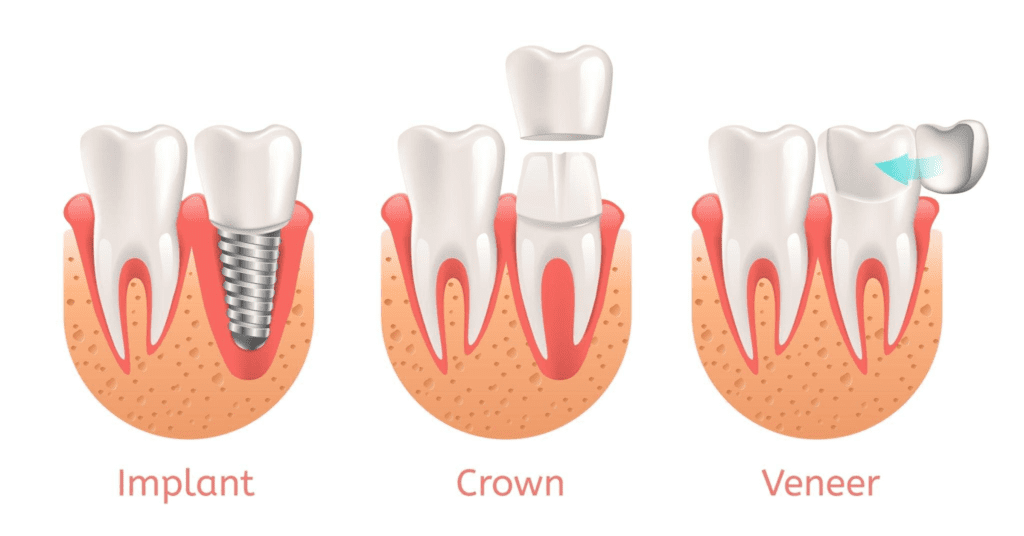
Front tooth crowns and veneers are both popular dental treatments that can transform the appearance of front teeth. While they share some similarities, there are key differences between the two procedures.
Front tooth crowns, also known as dental crowns, are tooth-shaped caps that cover the entire surface of a damaged or discolored tooth. They are typically used to restore the function and strength of teeth that are weak or have undergone root canal therapy. Crowns can also be used for cosmetic purposes to improve the color, shape, and alignment of front teeth. They are custom-made from materials such as porcelain, ceramic, or metal, providing durability and a natural-looking appearance.
On the other hand, veneers are thin shells that are bonded to the front surface of teeth. They are primarily used for cosmetic reasons to enhance the aesthetic appearance of front teeth. Veneers can address issues such as discoloration, minor misalignments, and uneven or chipped teeth. They are made from porcelain or composite resin and are less invasive than crowns, requiring minimal tooth reduction.
Ultimately, the choice between front tooth crowns and veneers depends on the specific needs and goals of the patient. A consultation with a dentist will help determine the most suitable treatment to achieve the desired results.
Preparation Process
The preparation process for front tooth crowns and veneers differs in terms of the extent of tooth structure removal required.
For front tooth crowns, the dentist will first examine the tooth and determine if a crown is the appropriate treatment option. If so, the tooth will be numbed with local anesthesia. Then, the dentist will reshape the tooth by removing a significant amount of its outer layer to create space for the crown. This step is crucial, as it ensures a proper fit for the crown, but it also means that a substantial amount of tooth structure is removed. This can potentially weaken the tooth, making it more susceptible to fractures or other issues in the future.
In contrast, the preparation process for veneers is less invasive. The dentist will remove only a minimal amount of tooth structure, typically around 0.5mm, which is similar to the thickness of the veneer itself. This minimal reduction allows for a more conservative approach that preserves much of the natural tooth structure, resulting in stronger teeth overall.
It is important to consider the implications of these preparation processes. While crowns are an effective option for restoring severely damaged teeth, the extensive removal of tooth structure can weaken the tooth, requiring a stronger restoration. Alternatively, veneers provide a less invasive option for cosmetic improvements, ensuring minimal alteration of the natural tooth structure. Your dentist will evaluate your specific condition and help you choose the most suitable treatment.
Durability
When it comes to durability, front tooth crowns are generally considered to be more robust compared to veneers. With proper care, front tooth crowns can last for up to 15 years, while veneers may need replacement after 7-10 years.
Front tooth crowns are made from durable materials such as porcelain, ceramic, or metal, which can withstand the forces of biting and chewing. They provide a strong and protective “cap” for the entire tooth, reducing the risk of damage or fracture. However, it is important to note that crowns can still become damaged or dislodged if not handled correctly, such as biting on hard objects or using the teeth as tools.
On the other hand, veneers are thin shells of porcelain or composite resin that are bonded to the front surface of the tooth. While veneers can enhance the appearance of the tooth, they are not as strong as crowns. Veneers may be prone to chipping or cracking if subjected to excessive force, such as biting down on hard foods or grinding the teeth at night. For this reason, it is important to take proper care of veneers and avoid habits that may compromise their durability.
In summary, front tooth crowns are generally more durable than veneers. With proper care and avoiding habits that may cause damage, front tooth crowns can provide long-lasting protection for up to 15 years. Veneers, although less durable, can still provide excellent aesthetic results but may require replacement after 7-10 years. Regular dental check-ups and practicing good oral hygiene play a vital role in maintaining the durability of both crowns and veneers.
Functionality
Front tooth crowns are designed to restore functionality to severely damaged or weakened teeth. Unlike veneers, which primarily focus on enhancing the appearance of a tooth, crowns provide significant support and protect the entire tooth structure.
Crowns are made from durable materials such as porcelain, ceramic, or metal, which can withstand the forces of biting and chewing. They serve as a strong and protective “cap” for the entire tooth, reducing the risk of further damage or fracture. This makes them ideal for teeth that have undergone extensive decay, root canal therapy, or have been weakened due to trauma.
In contrast, veneers are thin shells of porcelain or composite resin that are bonded to the front surface of the tooth. While veneers can improve the aesthetics of the teeth, they are not as strong as crowns and may be prone to chipping or cracking if exposed to excessive force.
It is important to note that while veneers are effective for addressing minor cosmetic concerns or slightly damaged teeth, crowns are a more suitable option for severely damaged teeth requiring extensive restoration. If you have concerns about the functionality of your front teeth, it is best to consult with a dental professional who can provide personalized advice and recommendations for your specific situation.
Cost
Cost is an important consideration when it comes to front teeth crowns and veneers. The price of these dental procedures can vary depending on several factors including the materials used, the preparation required.
Front teeth crowns tend to be more expensive compared to veneers. This is primarily due to the extensive preparation involved in crowning a tooth and the use of durable materials. Crowns are made from materials such as porcelain, ceramic, or metal, which are designed to withstand the forces of biting and chewing. The process of placing a crown involves removing a significant portion of the tooth structure and creating a tooth-shaped cap that covers the entire tooth. These factors contribute to the higher cost of crowns.
On the other hand, veneers are thin shells of porcelain or composite resin that are bonded to the front surface of the tooth. Veneers are primarily used for aesthetic purposes to improve the appearance of the teeth. They require minimal tooth preparation, often involving only the removal of a small amount of enamel. Veneers are generally less costly compared to crowns.
The cost of crowns and veneers for front teeth may also vary depending on the dental practice conducting the treatment. It is important to consult with a professional dentist to get an accurate cost estimate based on individual circumstances and requirements.
Advantages and disadvantages of front teeth crowns
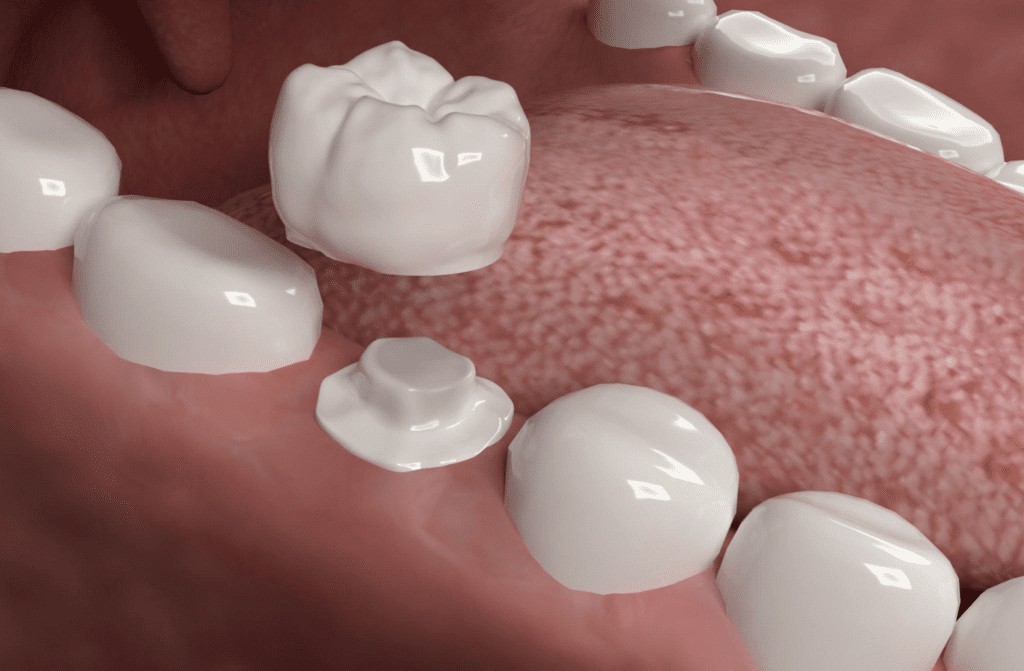
Front teeth crowns have both advantages and disadvantages that should be taken into account when deciding on a dental restoration option. These crowns are effective in restoring severely damaged teeth, providing strength and support. They are also a viable option for enhancing the appearance of discolored or misshapen teeth.
One of the significant benefits of front teeth crowns is their durability. With proper care, they can last up to 15 years or even longer. The materials used in front teeth crowns, such as porcelain or ceramic, are designed to withstand the forces of biting and chewing, ensuring a long-lasting restoration.
However, front teeth crowns do have some drawbacks. One disadvantage is the extensive tooth preparation required before placement. This process involves removing a significant portion of the tooth structure to create a tooth-shaped cap that covers the entire tooth. This preparation may lead to increased tooth sensitivity and the need for a root canal in some cases.
Front teeth crowns also tend to be more expensive compared to veneers. This is primarily due to the extensive preparation involved and the use of durable materials. It is essential to consider the cost factors when choosing between front teeth crowns and veneers.
Front teeth crowns offer significant benefits such as restoring severely damaged teeth and improving the appearance of discolored or misshapen teeth. Although they require extensive preparation and can be more expensive than veneers, they can provide long-lasting results with proper care. It is crucial to consult with a dental professional to determine the most suitable option for individual needs.
Advantages and disadvantages of veneers
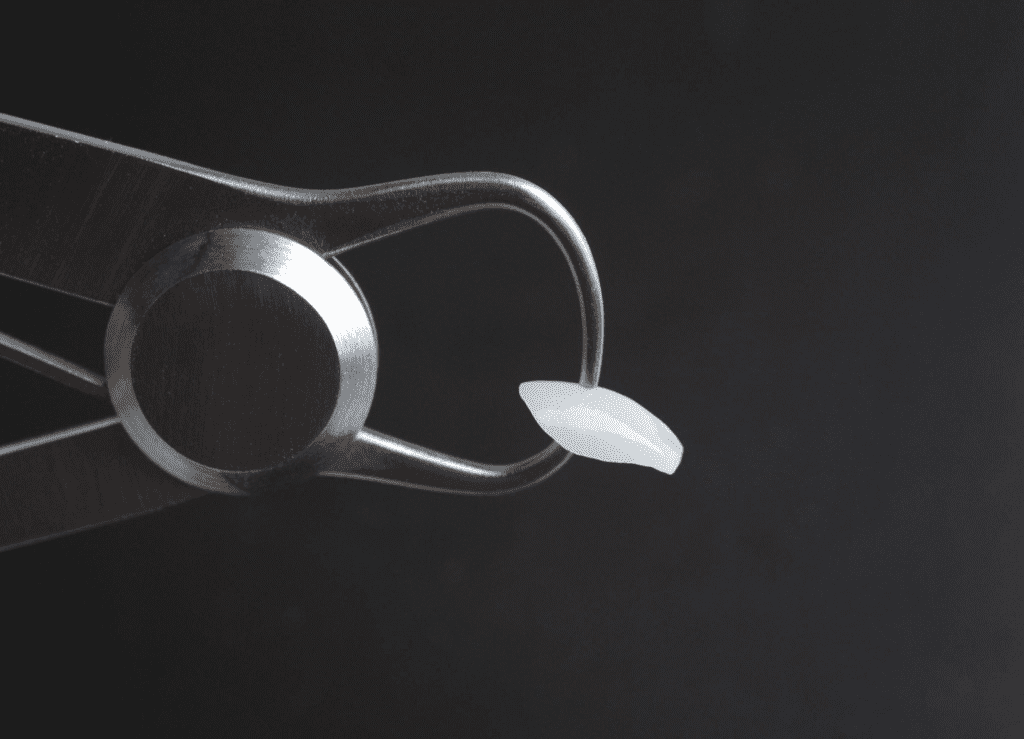
Veneers are a popular option for enhancing the appearance of front teeth. They offer several advantages and disadvantages worth considering before making a decision. On the positive side, veneers provide a quick and effective solution for addressing cosmetic concerns such as misshapen or discolored teeth.
They require minimal tooth preparation, preserving the majority of the natural tooth structure. Veneers also offer a natural and aesthetically pleasing result, as they are custom-made to match the color and shape of the surrounding teeth.
However, it’s essential to be aware of potential drawbacks. Veneers are not as durable as dental crowns and may require replacement after 10-15 years. Additionally, the thin layer of porcelain used in veneers is susceptible to damage from excessive biting forces or teeth grinding.
Finally, it’s important to note that veneers are a cosmetic procedure and may not be suitable for teeth with extensive decay or structural damage. Careful consideration of these pros and cons will help individuals make an informed decision about whether veneers are the right option for enhancing their smile.
Pros
When it comes to enhancing the appearance of front teeth, crowns are a popular choice. In comparison to veneers, front tooth crowns offer several advantages that make them a preferred option for many individuals.
One of the key benefits of front tooth crowns is that they require minimal tooth reduction. Unlike veneers, which often involve removing a significant portion of the natural tooth structure, crowns only require a minimal amount of tooth reduction. This means that more of the natural tooth can be preserved, resulting in a less invasive procedure overall.
Additionally, front tooth crowns have the ability to effectively improve the appearance of discolored teeth. Whether it’s due to staining or internal tooth discoloration, crowns can provide a comprehensive solution to enhance the appearance of teeth. By placing a tooth-shaped cap over the entire tooth, crowns can mask any discoloration and provide a natural-looking and consistent shade.
Furthermore, front tooth crowns are also beneficial for correcting misaligned teeth. If you have teeth that are slightly crooked or uneven, crowns can be used to reshape and align them. This can create a more harmonious and aligned smile without the need for orthodontic treatments.
In summary, front tooth crowns offer numerous pros compared to veneers. With minimal tooth reduction and a less invasive procedure, they provide an excellent option for improving the appearance of discolored and misaligned teeth. If you’re seeking a lasting and natural-looking solution for your front teeth, crowns are an effective choice.
Cons
When considering front tooth restoration options, it is important to be aware of the potential drawbacks or disadvantages of front teeth crowns and veneers. While both options can greatly enhance the appearance of front teeth, there are certain factors to consider.
One drawback of front teeth crowns is that they require a greater amount of tooth reduction compared to veneers. This means that more of the natural tooth structure needs to be removed in order to accommodate the crown. In contrast, veneers only require minimal tooth reduction, preserving more of the natural tooth enamel.
In terms of durability and maintenance, front teeth crowns may have an advantage over veneers. Crowns are typically made from durable materials such as porcelain or zirconia, which can withstand the forces and pressures of biting and chewing. Veneers, on the other hand, are made from thinner porcelain shells and may be more prone to chipping or cracking over time. Additionally, crowns are generally easier to maintain as they can be brushed and flossed like natural teeth, whereas veneers require special care and may need periodic replacement.
It is also important to consider the cost factor when choosing between front teeth crowns and veneers. Front teeth crowns tend to be more expensive than veneers due to a variety of factors. The materials used for crowns, such as high-quality porcelain or zirconia, can contribute to the higher cost. Additionally, the process of creating and fitting a crown is more involved compared to veneers, which can also increase the overall cost.
In conclusion, while front teeth crowns offer numerous advantages in terms of durability and natural-looking results, it is crucial to consider the potential drawbacks such as tooth reduction and higher cost. Consulting with a dental professional can help determine which option is best suited to individual needs and preferences.
The process of obtaining front teeth crowns or veneers
Getting front teeth crowns or veneers typically involves a multi-step process that begins with a consultation with a dentist or cosmetic dentist. During the consultation, the dentist will assess the condition of the front teeth and discuss the patient’s goals and expectations. X-rays and impressions may also be taken to aid in the planning process.
Once the treatment plan is determined, the next step is tooth preparation. For both crowns and veneers, a small amount of enamel is usually removed from the front teeth to make room for the restoration. This is done under local anesthesia to ensure the patient’s comfort.
After tooth preparation, impressions are taken to create custom-made crowns or veneers. These impressions are sent to a dental laboratory where skilled technicians fabricate the restorations. In the meantime, temporary crowns or veneers may be placed to protect the prepared teeth.
Once the final restorations are ready, the patient returns for the placement appointment. The dentist will remove the temporary restorations and check the fit and appearance of the crowns or veneers. Adjustments can be made at this stage to ensure a proper fit and a natural-looking result.
Finally, the crowns or veneers are permanently bonded to the teeth using dental cement or adhesive. The dentist will check the bite and make any necessary final adjustments.
With proper care and maintenance, front teeth crowns or veneers can provide a long-lasting and aesthetically pleasing solution to improve the appearance of the smile. Regular check-ups and good oral hygiene practices are essential to ensure the longevity of the restorations.
Consultation
The consultation step in getting front teeth crowns or veneers is an important and necessary part of the process. During this appointment, the dentist or cosmetic dentist examines the patient’s teeth and discusses their treatment goals.
The purpose of the consultation is for the dentist to thoroughly assess the condition of the front teeth and understand the patient’s specific needs and desires. This allows them to create a treatment plan that is tailored to the individual.
During the examination, the dentist will carefully examine the front teeth to determine if crowns or veneers are the most suitable option. They will assess the strength, alignment, and overall health of the teeth to ensure that the chosen restoration will be effective and long-lasting.
In addition to examining the teeth, the dentist will also take the time to discuss the patient’s treatment goals. This is an opportunity for the patient to express any concerns or desires they have regarding the appearance and function of their front teeth. The dentist will listen attentively and provide expert advice and recommendations based on their professional expertise.
Overall, the consultation step is crucial in determining the appropriate treatment plan for front teeth crowns or veneers. It allows the dentist to gather all the necessary information and collaborate with the patient to achieve the desired results.
Preparation
Preparation for front tooth crowns and veneers involves a step-by-step process that starts with a thorough examination and assessment by a dentist. While both procedures aim to improve the appearance and function of the front teeth, they differ in terms of the amount of tooth structure that needs to be prepared.
For front tooth crowns, extensive preparation is typically required. This involves the removal of a significant amount of enamel to make room for the crown. The dentist will carefully shape the tooth to ensure the crown fits securely over it. This step is necessary to ensure a proper fit and alignment of the crown, as well as to accommodate any underlying issues such as decay or damage.
On the other hand, veneers require minimal tooth reduction. Only a thin layer of enamel is removed, typically less than a millimeter, to create space for the veneer. This minimal reduction helps preserve the underlying tooth structure and is a more conservative option for patients with strong and healthy teeth.
The preparation process for front tooth crowns and veneers is crucial in achieving optimal results. It allows the dentist to create a stable foundation for the restoration and ensures a natural and harmonious smile. By evaluating the specific needs and condition of the teeth, the dentist can determine the most suitable treatment option, whether it be crowns or veneers, and provide patients with the best possible outcome.
Impression
Taking an impression for front tooth crowns is an important step in the dental crown procedure. This process involves creating an accurate mold of the prepared tooth, which is then sent to a dental lab. The lab uses this impression to create custom-made restorations that perfectly fit the patient’s teeth.
To begin the impression process, the dentist will ensure that the prepared tooth is clean and dry. They will then use a specialized tray filled with a putty-like material to take the impression. The tray is carefully placed over the tooth and held in position until the material sets.
Once the impression has set, it is carefully removed from the patient’s mouth. The dentist will inspect the impression for accuracy and any potential distortions. The impression is then sent to a dental lab, where skilled technicians will use it as a guide to create the patient’s custom-made front tooth crown.
At the dental lab, the technicians will use the impression to fabricate the crown using durable materials such as ceramic or porcelain. They will pay close attention to details such as shape, size, and color, ensuring that the final restoration matches the patient’s natural teeth.
Taking an accurate impression and sending it to a dental lab for custom-made restorations is a crucial step in the front tooth crown procedure. It ensures that the final crown fits securely and looks natural, providing patients with a beautiful smile and restored tooth function.
Temporary Restorations for Front Teeth Crowns and Veneers: Protecting the Foundations
Temporary restorations play an important role in the process of getting front teeth crowns or veneers. These temporary restorations are placed over the prepared teeth to protect them while the permanent restoration is being made.
During the initial dental appointment, the dentist will prepare the teeth by removing a small amount of enamel to accommodate the crown or veneer. Since this process takes time to create the custom-made permanent restoration, temporary restorations are essential to safeguard the teeth in the meantime.
Temporary restorations are typically made of temporary materials that can be easily removed. They serve as temporary caps or covers for the prepared teeth, shielding them from damage and sensitivity. This protection allows the patient to maintain normal oral function and aesthetics until the permanent restoration is ready.
Not only do temporary restorations guard the teeth, but they also serve as a trial period for the patient. They provide an opportunity to assess the fit, shape, and color of the final restoration and make any necessary adjustments before the permanent solution is cemented in place.
When the time comes to receive the permanent restoration, the temporary restorations are gently removed. This process is painless and ensures a smooth transition to the long-term solution.
In summary, temporary restorations are essential for front teeth crowns and veneers. They protect the prepared teeth, allowing for continued oral function and comfort until the permanent restoration is ready. With their temporary materials and easy removal, these restorations play a crucial role in providing patients with a seamless experience and optimal results.
Fitting
The process of fitting front teeth crowns or veneers involves the careful placement of the permanent restoration onto the tooth or teeth. Once the custom-made permanent restoration is ready, the dentist will ensure a comfortable fit by making any necessary adjustments.
To begin the fitting process, the temporary restorations, which were used to protect the prepared teeth, are gently removed. This step allows for a smooth transition to the long-term solution. The dentist then carefully places the permanent restoration onto the tooth or teeth.
During this process, the dentist will check the fit, shape, and color of the restoration to ensure optimal aesthetics and functionality. Any necessary adjustments are made to ensure a comfortable fit and a natural appearance. The restoration should blend seamlessly with the surrounding teeth, creating a beautiful smile.
The fitting process is crucial for achieving a successful outcome with front teeth crowns or veneers. The dentist’s expertise and attention to detail are key in ensuring that the permanent restoration is properly aligned and securely fixed in place.
By carefully fitting the permanent restoration, patients can enjoy the benefits of front teeth crowns or veneers, including improved aesthetics, enhanced tooth strength, and restored functionality.
Bonding
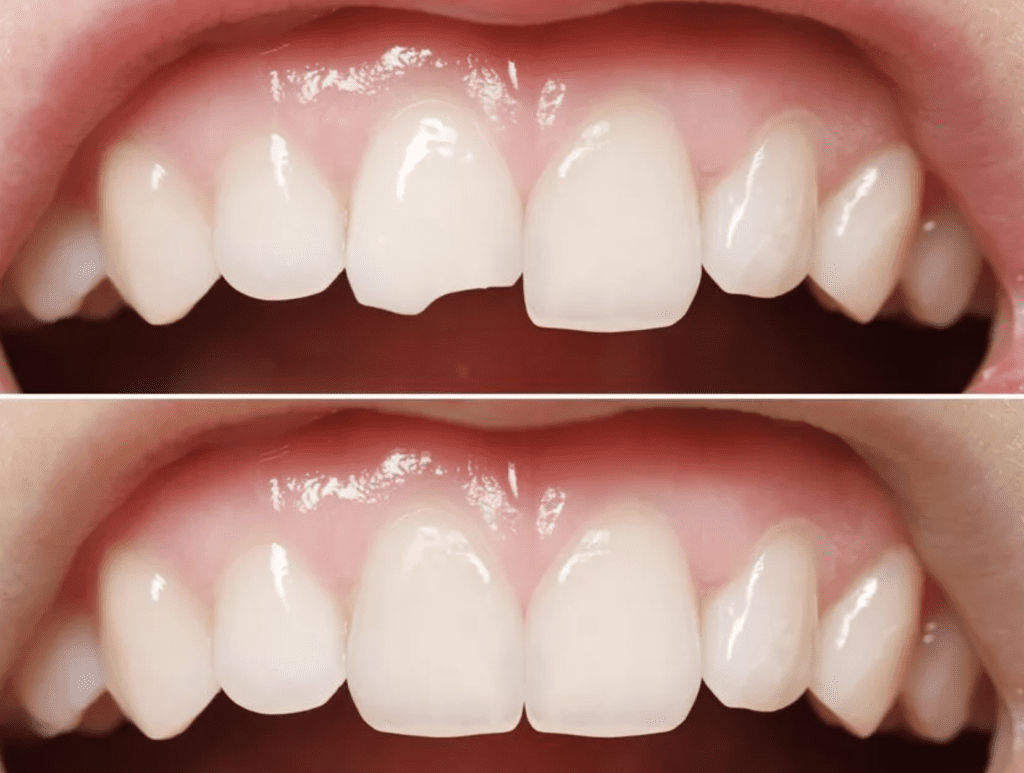
The bonding process for front teeth crowns and veneers involves securely attaching the restoration to the tooth using a special dental adhesive. This technique ensures a strong and long-lasting bond between the restoration and the natural tooth.
The bonding procedure typically involves the following steps:
1. Preparation: The tooth is prepared by removing a thin layer of enamel to create space for the restoration. For veneers, the tooth may require minimal preparation, while for crowns, more extensive tooth reshaping may be necessary.
2. Dental adhesive application: A dental adhesive, specifically designed for bonding restorations to teeth, is applied to the prepared tooth surface. This adhesive acts as a bonding agent, creating a strong bond between the restoration and the tooth.
3. Restoration placement: The prepared tooth is carefully positioned and the restoration, whether a crown or veneer, is gently placed onto the tooth surface. The dentist ensures proper alignment and fit to achieve optimal aesthetics and functionality.
4. Curing: To activate the dental adhesive and facilitate the bonding process, a special curing light is used. This light activates the adhesive and helps it harden, creating a secure and durable bond between the restoration and the tooth.
5. Final adjustments: Once the restoration is securely bonded to the tooth, any necessary adjustments are made to ensure a comfortable fit and a natural appearance. The dentist may trim or polish the restoration as needed.
Overall, the bonding process for front teeth crowns and veneers involves the careful placement of the restoration using a dental adhesive. This technique ensures a strong bond between the restoration and the tooth, resulting in an aesthetically pleasing and functional outcome.
Tips for maintaining and caring for front teeth crowns and veneers
Proper maintenance and care of front teeth crowns and veneers are essential for their longevity and maintaining a natural appearance. Here are some important guidelines to follow:
1. Good Oral Hygiene Habits: Brush your teeth at least twice a day and floss daily to remove plaque and food particles. Pay extra attention to the gumline and the area around the restoration.
2. Avoid Stain-Causing Foods: Certain foods and beverages can cause stains on your natural teeth as well as your front teeth crowns and veneers. Limit your consumption of coffee, tea, red wine, and highly pigmented foods like berries.
3. Regular Dental Visits: Visit your dentist every six months for routine check-ups and professional cleanings. During these visits, the dentist will monitor the condition of your restorations and suggest any necessary repairs or replacements.
4. Monitor the Condition: Keep an eye on your front teeth crowns and veneers and notify your dentist if you notice any changes, such as chips, cracks, or discoloration. Early detection of any issues can prevent further damage.
Remember, even though front teeth crowns and veneers are made of durable materials, they are not indestructible. With proper maintenance, care, and regular dental visits, you can ensure that your front teeth restorations stay in optimal condition and provide you with a beautiful smile for years to come.




